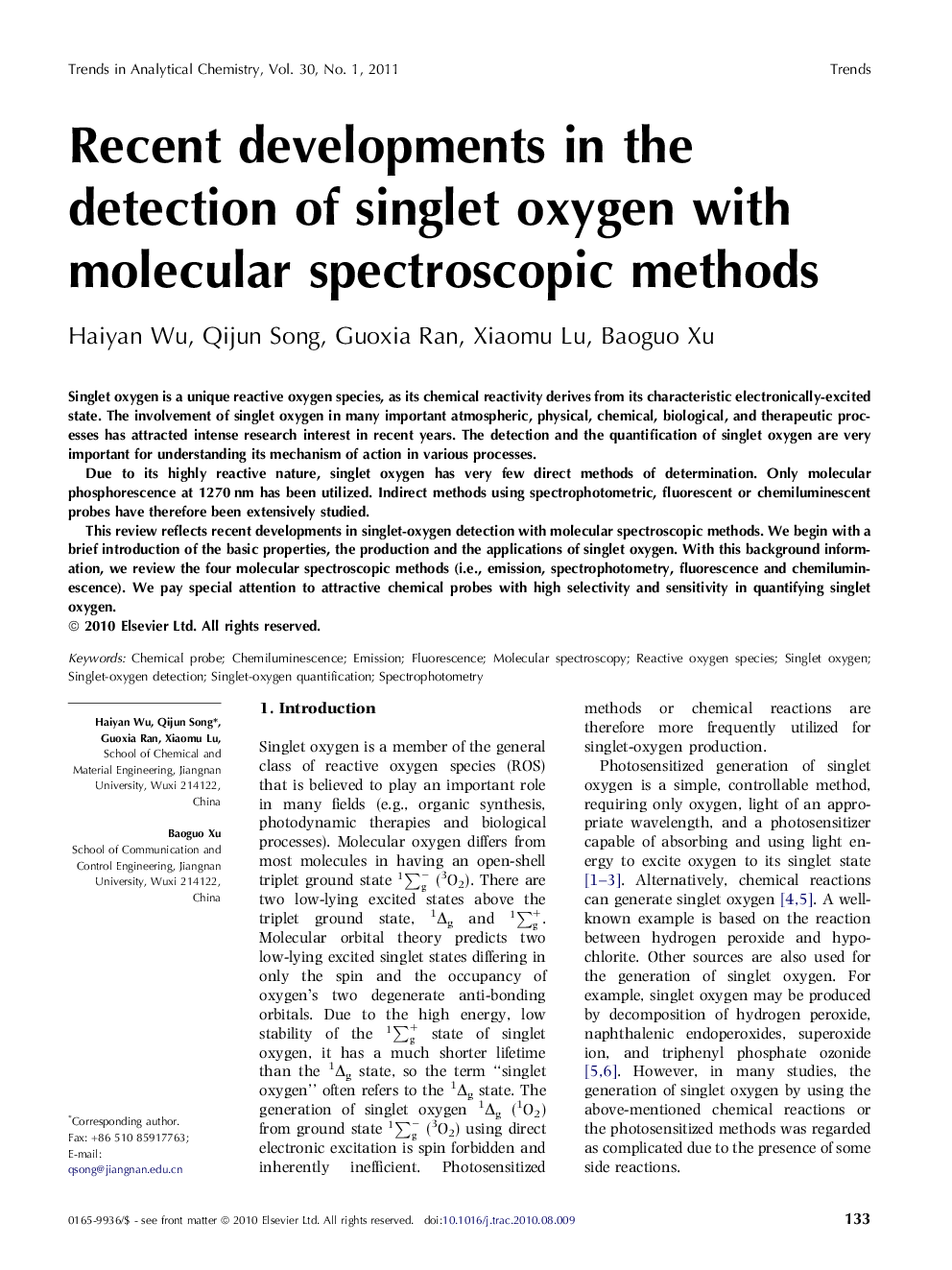| Article ID | Journal | Published Year | Pages | File Type |
|---|---|---|---|---|
| 1249290 | TrAC Trends in Analytical Chemistry | 2011 | 9 Pages |
Singlet oxygen is a unique reactive oxygen species, as its chemical reactivity derives from its characteristic electronically-excited state. The involvement of singlet oxygen in many important atmospheric, physical, chemical, biological, and therapeutic processes has attracted intense research interest in recent years. The detection and the quantification of singlet oxygen are very important for understanding its mechanism of action in various processes.Due to its highly reactive nature, singlet oxygen has very few direct methods of determination. Only molecular phosphorescence at 1270 nm has been utilized. Indirect methods using spectrophotometric, fluorescent or chemiluminescent probes have therefore been extensively studied.This review reflects recent developments in singlet-oxygen detection with molecular spectroscopic methods. We begin with a brief introduction of the basic properties, the production and the applications of singlet oxygen. With this background information, we review the four molecular spectroscopic methods (i.e., emission, spectrophotometry, fluorescence and chemiluminescence). We pay special attention to attractive chemical probes with high selectivity and sensitivity in quantifying singlet oxygen.
